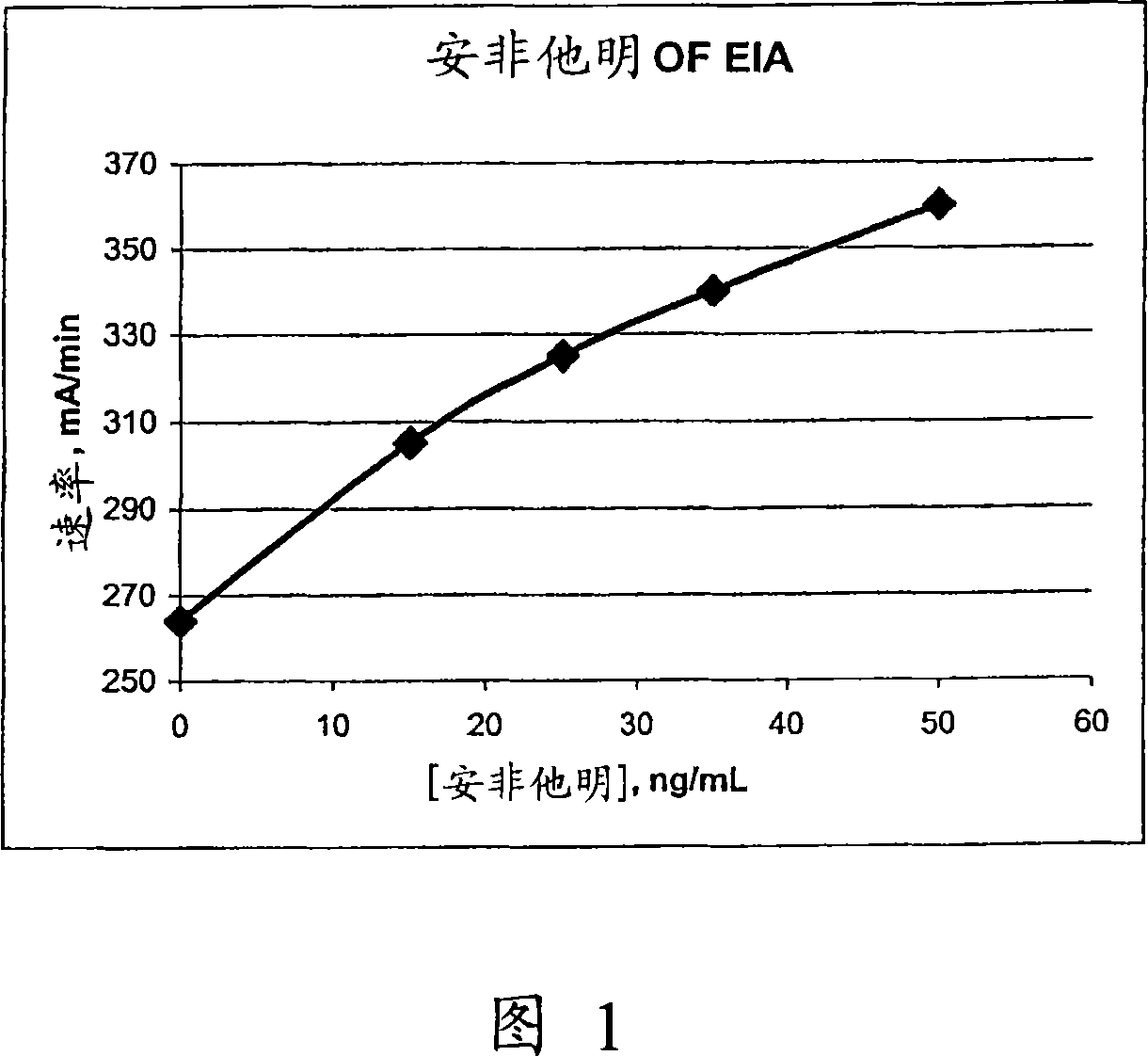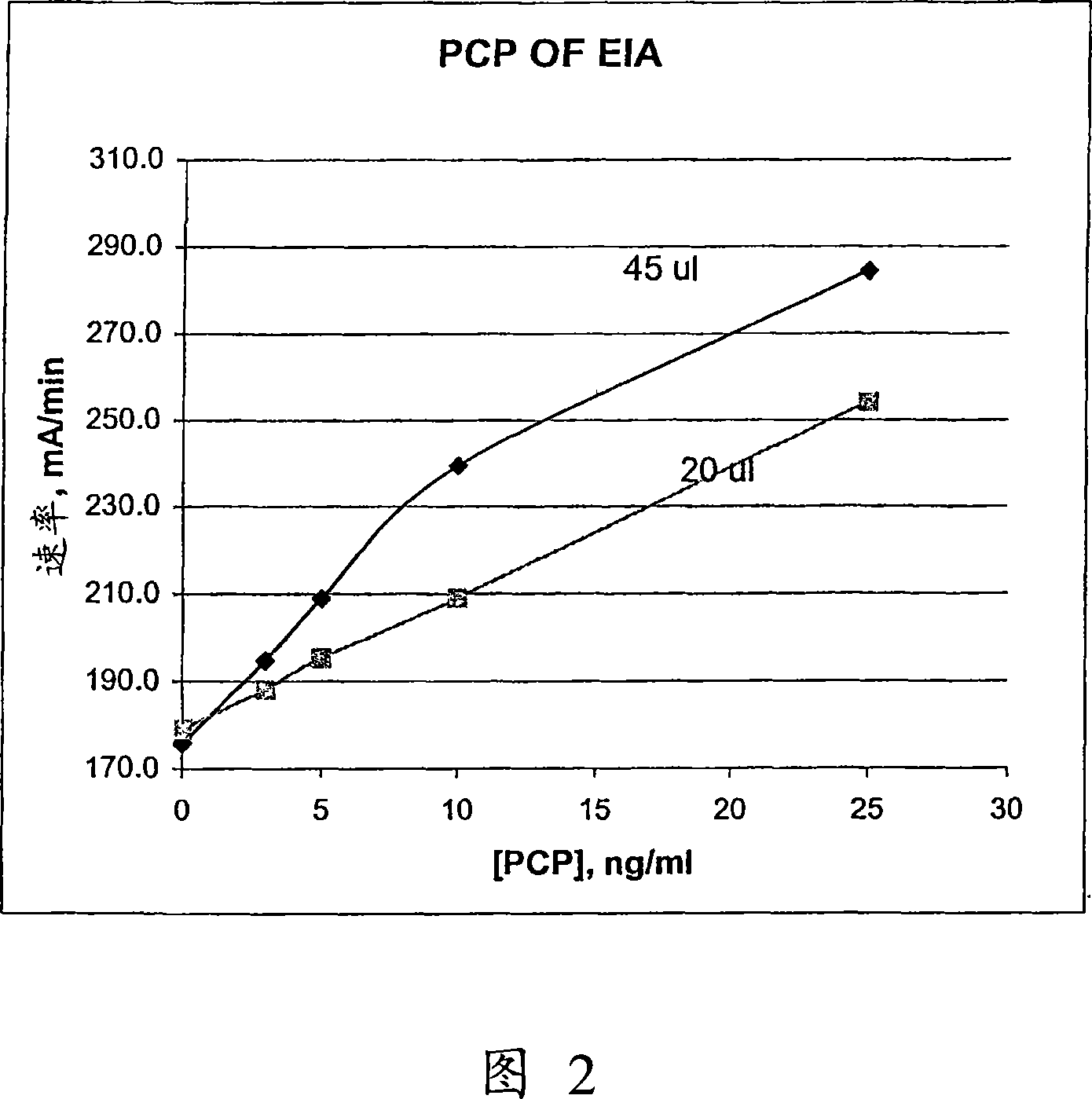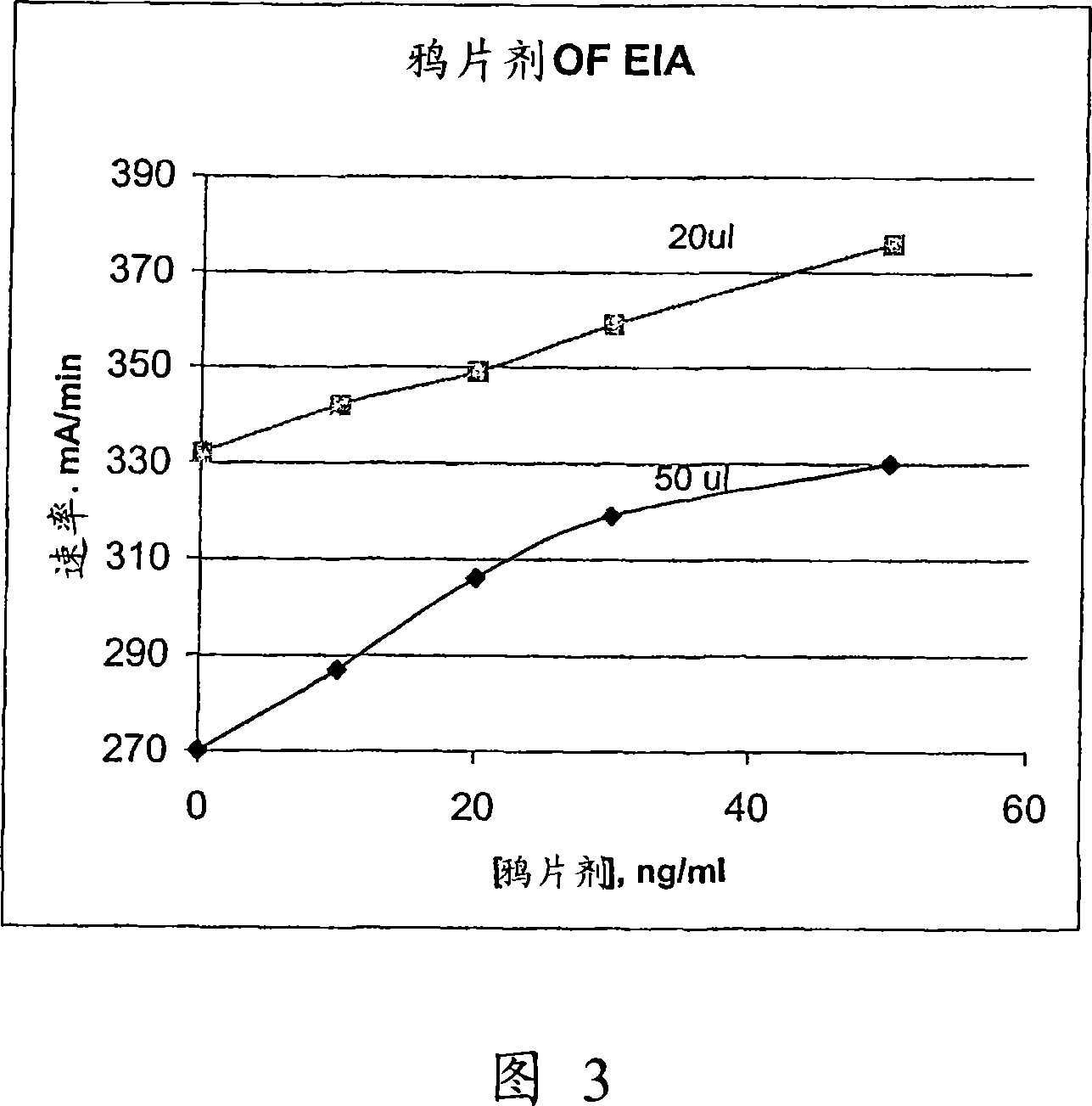Homogeneous enzyme immunoassay for oral fluid
A technology of oral fluid and enzyme immunity, applied in the field of immune analysis
- Summary
- Abstract
- Description
- Claims
- Application Information
AI Technical Summary
Problems solved by technology
Method used
Image
Examples
Embodiment 1
[0231] Example 1: Calculation of Enzyme Activity of Enzyme-Analyte Conjugates
[0232] In order to accurately determine the concentration of the analyte in a sample suspected of containing the analyte, the signal (expressed as ΔA / min) generated by G6PDH between the negative calibrator and the high calibrator should preferably be about 100 mA / min (rate mode ), the negative calibrator is a calibrator with 0 ng / ml analyte, and the high calibrator is, for example, a calibrator with 50 ng / ml analyte. Therefore, in the conventional homogeneous enzyme immunoassay of the present invention, G6PDH produced about 100 mA / min. The following equation shows the relationship between signal intensity, enzyme activity, and reaction volume.
[0233]
[0234] where ΔA is the signal generated by G6PDH (expressed in absorption or milliabsorbance units); V t is the total reaction volume in milliliters (ml) and includes the volume of assay sample, R1 (volume of antibody or receptor, substrate, c...
Embodiment 2
Example 2: G6PDH-PCP conjugates
[0248] G6PDH with an initial specific activity of 860 units / mg was purchased from USB Biochemical. Conjugation of 19 mg of G6PDH to the PCP hapten resulted in 45% inactivation. After purification, 13 ml of enzyme-PCP conjugate (1.4 mg / ml) was isolated. Purified enzyme-PCP conjugates were further inhibited by up to 60% after binding to PCP-reactive antibodies. 1-2,000-fold dilutions of the enzyme reagent containing 0.731 μg / ml enzyme-PCP conjugate were prepared. In the desired immunoassay, 20 μl-45 μl sample, 75 μl enzyme-PCP conjugate, and 150 μl antibody solution were used. The following calculations illustrate the importance of % inactivation, % inhibition and sample volume.
1. Enzyme concentration in the reagent: 0.000731mg / ml
2. Enzyme in each assay (75 μl / analysis): 0.0000548 mg / analysis
3. Standardized to 1.0ml (from an assay volume of 0.245ml): 0.000224mg / ml
4. Enzyme activity after 45% inactivation: 0.1058 units / ml
5. Enzym...
Embodiment 3
[0269]G6PDH enzyme (4 mg, starting specific activity 860 units / ml) was conjugated to the opiate hapten. 8.5 ml of G6PDH-opiate conjugate were purified. This conjugation resulted in a 45% inactivation of G6PDH. Opioid antibody binding to the G6PDH-opiate conjugate resulted in 52% inhibition. The conjugate was formulated into the enzyme reagent at a dilution factor of 1:450. Using the same calculation method as in Example 1, the following results were obtained:
PUM
| Property | Measurement | Unit |
|---|---|---|
| volume | aaaaa | aaaaa |
Abstract
Description
Claims
Application Information
 Login to View More
Login to View More - R&D
- Intellectual Property
- Life Sciences
- Materials
- Tech Scout
- Unparalleled Data Quality
- Higher Quality Content
- 60% Fewer Hallucinations
Browse by: Latest US Patents, China's latest patents, Technical Efficacy Thesaurus, Application Domain, Technology Topic, Popular Technical Reports.
© 2025 PatSnap. All rights reserved.Legal|Privacy policy|Modern Slavery Act Transparency Statement|Sitemap|About US| Contact US: help@patsnap.com



